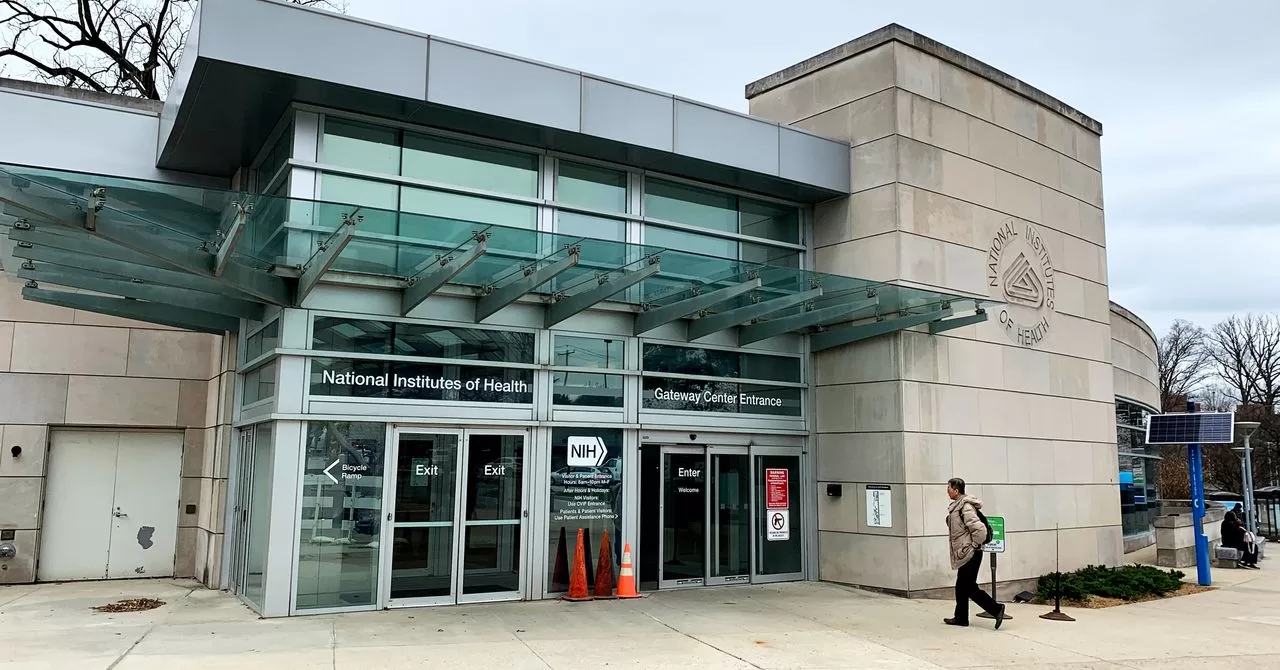
Several top scientists charged with overseeing research into disease prevention and cures at the National Institutes of Health (NIH) were notified that they were subject to a reduction in force on Tuesday as part of a devastating purge of federal employees carried out by US Health and Human Services Secretary Robert Kennedy Jr, WIRED has learned.
Multiple sources at the NIH, granted anonymity because they were not authorized to talk to the media, confirmed Tuesday afternoon that at least 10 principal investigators who were leading and directing medical research at the agency had been fired. Among them is Dr. Richard Youle, a leading researcher in the field of neurodegenerative disorders previously awarded the Breakthrough Prize in Life Sciences for his groundbreaking research identifying mechanisms behind Parkinson’s disease.
The Breakthrough Prize ceremony, often referred to as the “Oscars of Science,” was last year attended by Elon Musk, whose Department of Government Efficiency (DOGE) has served as the tip of the spear in President Donald Trump’s campaign to eliminate large swaths of the federal workforce.
HHS did not respond to WIRED’s questions about the firings of NIH scientists. Vianca Rodriguez, an agency spokesperson, pointed to previous statements by Sec. Kennedy, including plans announced last week to eliminate 1,200 NIH jobs in areas of procurement, human resources, and communications.
Multiple NIH sources tell WIRED the layoffs include—in addition to labor, IT, and human resources personnel—several accomplished senior investigators at the National Institute of Neurological Disorders and Stroke (NINDS), top scientists at the National Institute on Aging, and several researchers noted for their work in HIV, emerging infectious diseases, and child brain and neural disorders.
At an NINDS town hall meeting on Tuesday, leadership at that institute expressed confusion about the cuts, saying they were blindsided by firings of principal investigators, or PIs, who lead research teams. NIH has approximately 1,200 PIs across its 27 centers and institutes. “To get rid of 11 of our senior PIs … we’re hoping that’s a mistake because we can’t figure out why they would want to do that,” said Walter Koroshetz, director of the NINDS, according to a source present at the meeting.
The labs affected by the layoffs include those involved in clinical trials as well as pre-clinical studies. It is unclear, NIH staff said, what the plans are for the data they’ve accumulated or what will happen to patients involved in ongoing trials.
An email sent out Tuesday to more than 2,000 recent college graduates, graduate students, and postdoctoral fellows working at NIH seems to confirm the firings of multiple PIs. “Many of us know someone, directly or indirectly, who received a termination notice today as part of an HHS-wide Reduction in Force,” reads an email by Sharon Milgram, director of NIH’s Office of Intramural Training & Education, which was shared with WIRED.
The NIH supports young researchers through various programs, typically temporary one- or two-years fellowships. These early-career scientists are placed in labs under a PI. In her email, Milgram tells fellows with NIH’s postbaccalaureate, cancer research, and visiting fellows programs whose PI received an RIF notice, “I can assure you that your fellowship appointment is not immediately terminated and that we will work with each of you to explore reassignment options soon.”
An effort is said to be underway by NIH leaders to reverse the firings of the investigators, whose absence, sources say, could paralyze research at the agency into finding targets and biomarkers for drug development and other treatment.
| Got a Tip? |
|---|
| Are you a current or former government employee who wants to talk about what’s happening? We’d like to hear from you. Using a nonwork phone or computer, contact the reporters securely on Signal at dell.3030 and emullin.06. |
The Trump administration sent out notices to thousands of federal health agency employees Tuesday, including at the NIH, the Food and Drug Administration (FDA), and the Centers for Disease Control and Prevention (CDC).
The NIH, which serves as the world’s largest source of funding for research into the causes, prevention, and cure of human disease, was stripped of critical support staff on Tuesday in what Health Secretary Kennedy framed as a shift in his agency’s priorities. Roughly a quarter of the agency’s staff has been cut since the start of Trump’s second term.
In a statement on X, Kennedy called the firings a “difficult moment,” while blaming the size of his department’s budget. “This overhaul is about realigning HHS with its core mission to stop the chronic disease epidemic and Make America Healthy Again,” he said.
A senior scientist at NIH tells WIRED the impact of Tuesday’s layoffs was sheer “chaos,” with the firings of the lead investigators projected to widely impair and impede diverse ongoing research ranging from mechanisms within cells in the brain to human patients with neurologic conditions.
“It’s extremely disruptive to lose the head of a lab,” another scientist said. “But this is also disruptive for every single lab that does remain at NIH, because they’ve removed so much of the administrative support that’s necessary for us to function.”
On Tuesday, US Senators Bill Cassidy, a Republican from Louisiana, and Bernie Sanders, an independent from Vermont, sent a letter to Kennedy inviting him to an April 10 Senate Health, Education, Labor, and Pensions (HELP) Committee meeting on the HHS reorganization.
During his confirmation process, Kennedy committed to providing quarterly updates to the HELP committee, which Cassidy chairs. “This will be a good opportunity for him to set the record straight,” Cassady said in a statement, “and speak to the goals, structure and benefits of the proposed reorganization.”
